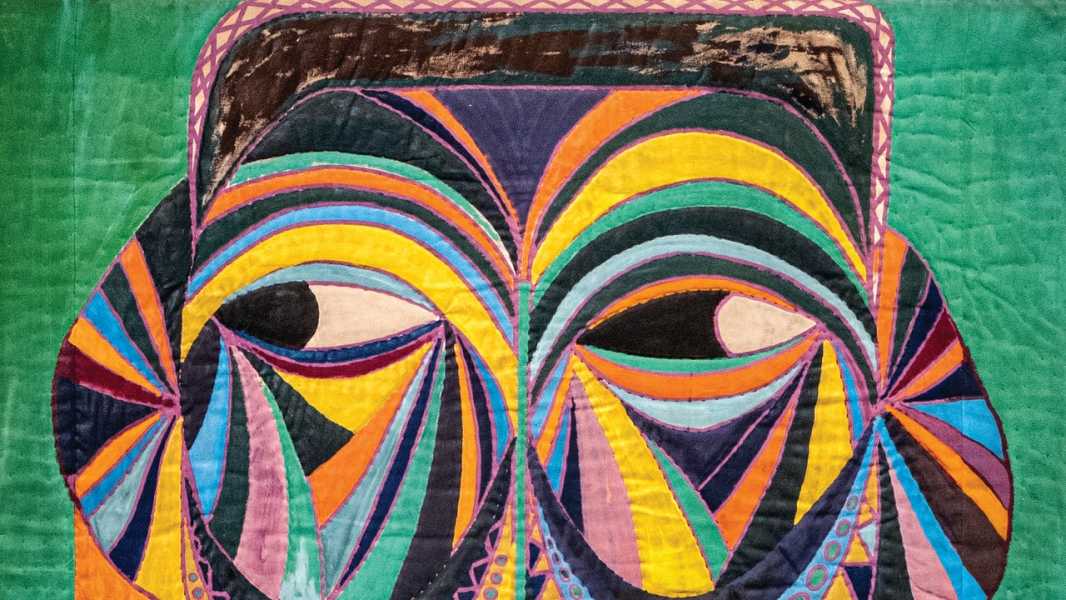
Save this storySave this storySave this storySave this story
Jackson Arn
The New Yorker’s art critic
You’re reading the Goings On newsletter, a guide to what we’re watching, listening to, and doing this week. Sign up to receive it in your in-box.
The Filipina artist Pacita Abad—who visited at least sixty countries, learning from Afghan embroidery, Mexican muralism, Javanese dyeing, Sri Lankan masks, and Pakistani quilts—makes me think of Reno, Nevada, the biggest little city in the world. In the thirty-two years preceding her death, at fifty-eight, in 2004, she stitched and painted whole metropolises of stuff, more than fifty of which appear in her MoMA PS1 retrospective (through Sept. 2). And yet her creations (truly some of the biggest little art you’ll ever see) never exhaust. All the shades and shapes and textures have been adroitly squeezed in—it’s as though the entire visible spectrum were a thing that you could hold in your fist.
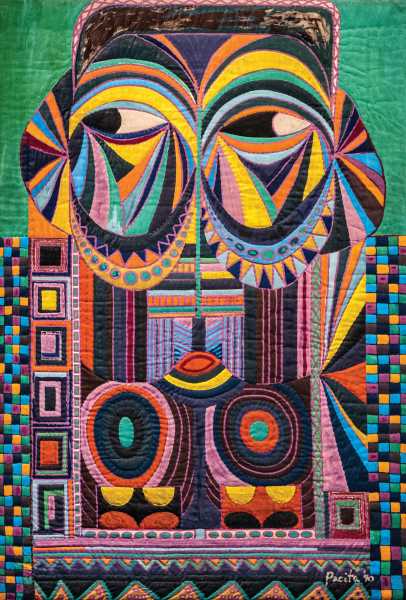
Detail of “European Mask” (1990).
Art work by Pacita Abad / Courtesy MOMA; Photograph by Kris Graves
Abad was living in Boston when, in the early eighties, she began sewing canvases into padded patches and encrusting the results—quilts called trapuntos—with paint, beads, sequins, and an archivist’s nervous breakdown’s worth of other materials. “European Mask” (pictured) is, if you can believe it, one of the more subdued examples in the show, which has received critical hosannas galore since originating at the Walker Art Center, last year. It is odd how certain “tragically unappreciated” artists are converted into marble busts of themselves shortly after they die. This is supposed to be a compliment, of course, but can sometimes seem like a guilty way of balancing out neglect, with much the same outcome: the artist, now presented as incapable of anything but greatness, is hard to see straight, the art even harder. Abad’s work strikes me as more hit-or-miss than the raves suggest, though this is part of its charisma: in her trapuntos, as on any city street, there is plenty to delight in and plenty to wince at. She isn’t going for perfection; her specialty is a bright vitality that’s always a few paces ahead, inviting you to chase after it. Happy trails.

About Town
Jazz
Shabaka Hutchings began as the saxophonist in such groups as Sons of Kemet and the Comet Is Coming, his style satiny yet vigorous. In 2023, he announced that he would put down the sax, and, performing as Shabaka, he took up woodwinds. That year, the project “Afrikan Culture” found him embracing the shakuhachi, a Japanese bamboo flute, as a sort of centering exercise, in pursuit of meditation and ritual awakening, clearly under the thrall of his chosen instrument. He continued to channel reeds with “Perceive Its Beauty, Acknowledge Its Grace,” from April, a serene album of rich soundscapes embodying the instruction of its title, which feels like a personal mantra.—Sheldon Pearce (Blue Note; Sept. 3-8.)
Classical
Despite a recent, sudden collapse of a ceiling in its host’s historic main house, the Boscobel Chamber Music Festival goes on as scheduled and with spirit intact. Select musicians join Arnaud Sussmann, the artistic director of Palm Beach’s Chamber Music Society, near Cold Spring—perhaps the exact antithesis of Palm Beach—for a series of performances held on sprawling grounds. This year’s festival includes an array of quintets from Mozart to Farrenc, with various non-quintets by Brahms, Dohnanyi, and more. And no need to fear: performances will occur either outside or under ceilings that have yet to crumble.—Jane Bua (Boscobel, Garrison, N.Y.; Aug. 30-Sept. 8.)
Afro-Pop
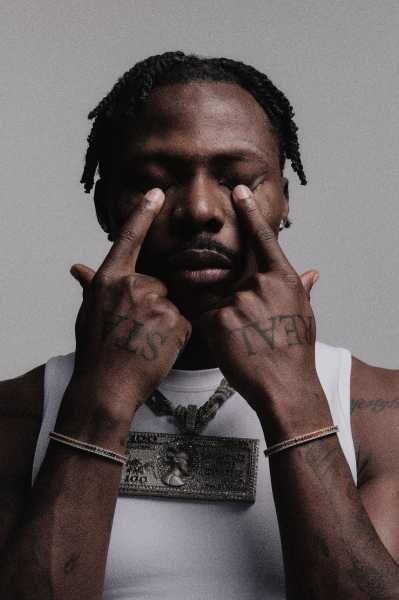
Photograph by Walter Banks
The Nigerian singer Asake crashed into African music’s upper echelon as an innovator in street pop, a sound born in the twenty-tens that brought the swagger of hip-hop closer to the struggles of inner-city Lagos. His story was local, but his methods were much broader: as one of the earliest West African adopters of the South African house form amapiano, Asake took the genre’s rubbery underpinning, the log drum, and affixed its rhythms to choral chants and the fuji music of the Yoruba people. Since finally cracking the code of this throbbing style on the 2022 hit single, “Mr. Money,” he has released a new album each year; his latest, “Lungu Boy,” out this month, seems to look out at Afro-pop and its reverberations and point to Asake at a convergence of the diaspora.—S.P. (Madison Square Garden; Aug. 30.)
Broadway
In the olden days of 1958, Mary Rodgers (the daughter of the musical-theatre great Richard), Marshall Barer, Dean Fuller, and Jay Thompson adapted Hans Christian Andersen’s “The Princess and the Pea” into a musical. As “Once Upon a Mattress,” it found favor with the public, eventually transferring to Broadway and loosing a young Carol Burnett upon the world. Now, transferring from City Center, it returns, featuring the Tony-crowned Sutton Foster as Winnifred the Woebegone. She must prove herself a true princess to win the hand of Prince Dauntless (Michael Urie), whose mother tests her by hiding a pea in a stack of mattresses—a threat to the sleep of only an exquisitely sensitive royal. The show’s frolicsome score, colorful costumes, and even more colorful performances will please most; only the exceedingly sensitive would grow restless on account of a pea-size plot.—Dan Stahl (Hudson; through Nov. 30.)
Dance
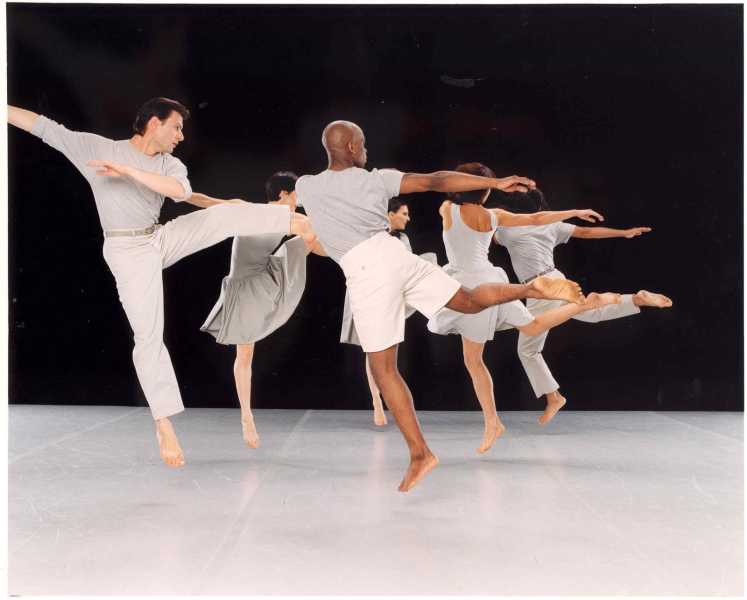
Mark Morris Dance Group performing “Gloria.”
Photograph by Marc Royce
Some works of art contain multitudes, and so it is with Mark Morris’s “Gloria,” into which, back in 1981, the young Morris managed to somehow channel the glory and pain of life itself, with just ten dancers. The music, Vivaldi’s choral work “Gloria in D,” helps, too. Grandeur, joy, fortitude, playfulness, terror—they’re all there. The dance is, in echt-Morris style, wonderfully humane and unfussy, and often quite witty. Dancers crawl and slither like beasts, only to rise and traverse space with buoyant steps. At Bryant Park, Mark Morris Dance Group performs to a recorded score—a pity. Still, it’s a great piece, worth seeing under any circumstances.—Marina Harss (Bryant Park, Aug. 31.)
Movies
One of the most distinctive recent rediscoveries of international cinema, the Iranian director Bahrām Beyzāêi’s 1974 drama, “The Stranger and the Fog,” is both a passionate romance and a teeming action film, uniting history and legend, anthropology and mysticism. In a pre-modern seaside village, a small boat washes ashore with a castaway, a man named Ayat, who is viewed with suspicion by the townspeople, particularly by a woman named Rana, whose own husband was lost at sea a year ago. The two fall in love and marry, but Ayat—increasingly paranoid in the face of vague accusations and looming rumors—commits an act of violence that sparks a large-scale battle. Beyzāêi fills the frame with whirling pageantry and frenzied theatrics, and he conjures a mythical world that’s eye-catchingly ornate and ruthlessly bloody.—Richard Brody (Film at Lincoln Center; opens Aug. 30.)
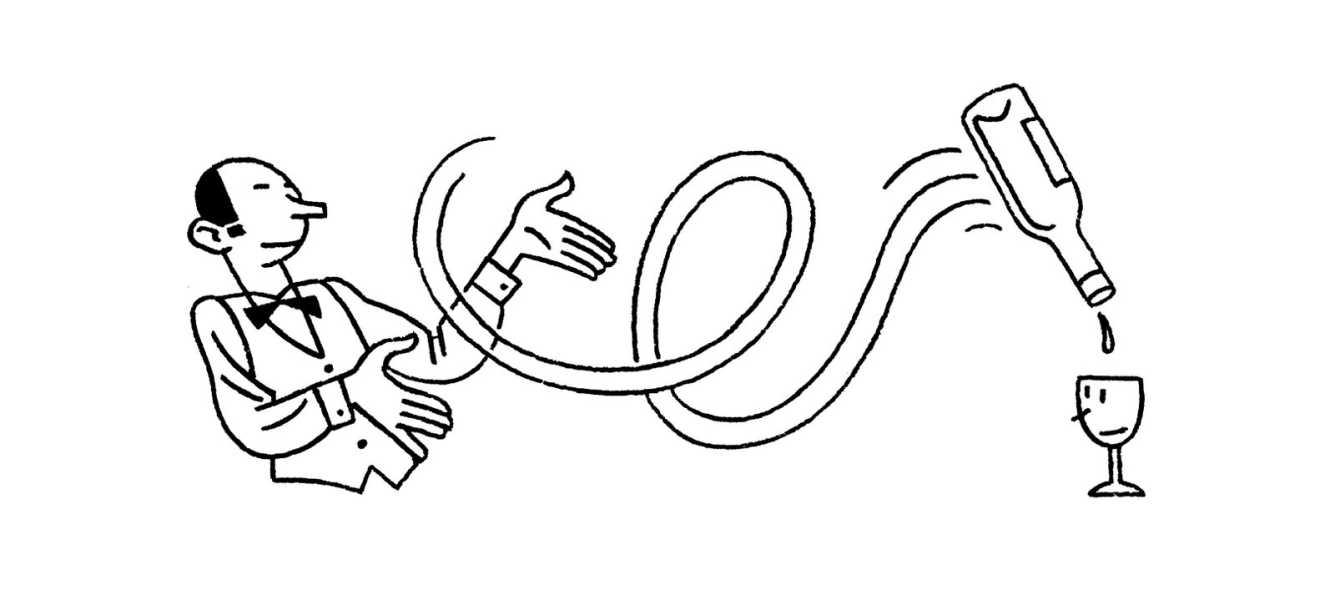
Bar Tab
Taran Dugal visits a Bushwick conversation pit.
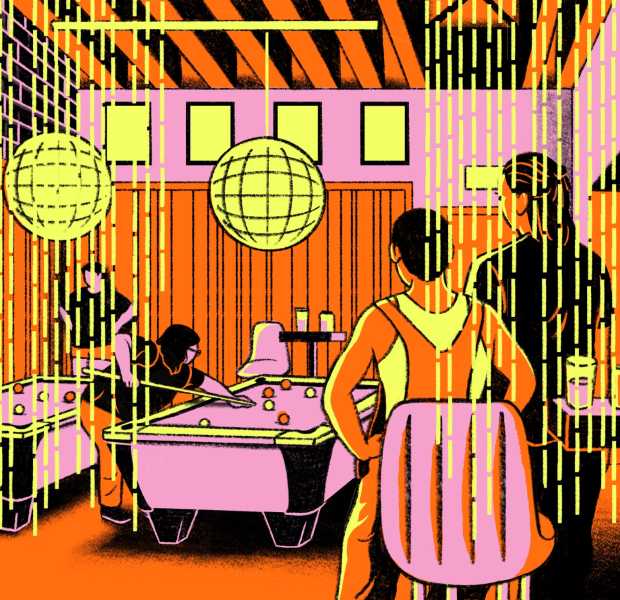
Illustration by Claire Merchlinsky
Not too long ago (ten years), in a neighborhood only slightly far away (Bushwick), poets, rockers, and actors took the L train just far enough to find a place to gentrify, and then put down shallow roots. Andy Simmons, one of the owners of the bar Carousel (36 Wyckoff Ave., Brooklyn), which opened last year, seemed to have this bohemian migration in mind when the place was designed. “I wanted it to feel like a 1973 house party in Laurel Canyon,” he said, and, in many ways, it does. Take a spin around the room, and you’ll find a worn vintage photo booth, pool tables, a conversation pit lined in scarlet velvet, and a wood-panelled dance area, complete with a mini-library (Haruki Murakami, John Irving). Smack in the middle is a glass-walled atrium where patrons can stop in for a quick smoke. On a recent weekend, however, a pair of curious onlookers encountered a scene that was distinctly un-seventies, and almost entirely devoid of local artists. Deep in the conversation pit, they found themselves surrounded by buttoned-up bankers, who drowned out the observers’ dialogue with tirades about “liabilities” and “R.O.I.s.” Ears ringing, the two made their way to the atrium, where a short-lived discussion with some Parliament-puffing actresses was interrupted by a gaggle of suits banging on the glass. The duo, sipping fervently through the cacophony, was pleasantly mollified by the Pink Malone, a wonderfully sweet watermelon-and-tequila cocktail, and the Carousel Lager, a silky-smooth invention of the local brewer KCBC. Such delights were almost enough to make the onlookers forget that the creative haven they’d envisioned had turned out to be more of a watering hole for adventuring Manhattanites. As they ordered one final round, they overheard a patron surveying the chaos: “So this is what Bushwick is like, huh?”
P.S. Good stuff on the Internet:
- A friendship-breakup playlist
- Bananas: Not just for slipping on
- “Underwater,” by Hannah Kingsley-Ma
Sourse: newyorker.com






